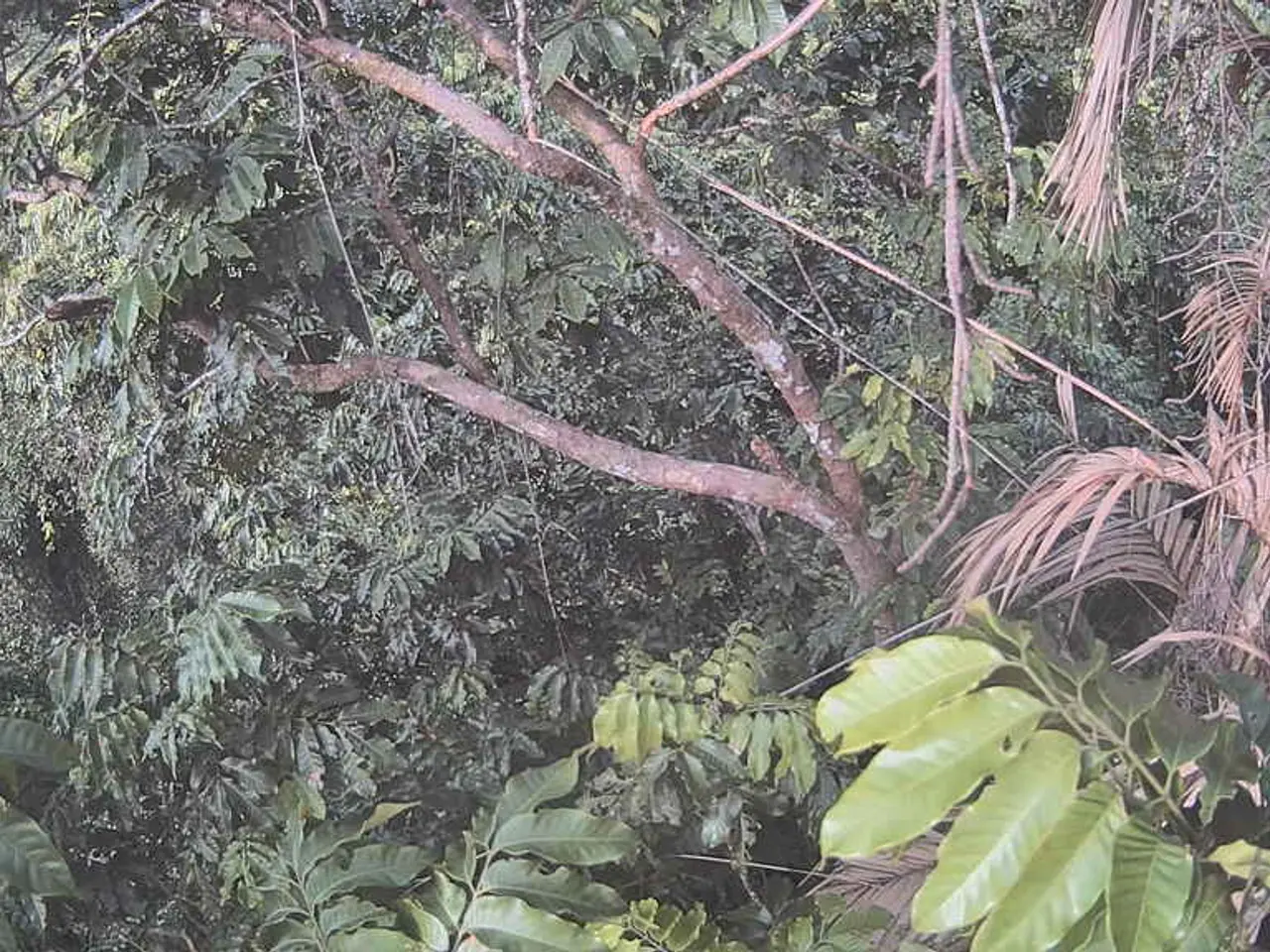Aging vegetation and farmers advancing in years negatively impact the forecast for major palm oil exporting nations
Struggling Palm Oil Supplies and the Impact on Global Markets
The aging palm oil trees on smallholder plantations in Malaysia and Indonesia are causing a significant strain on the global market, as these countries account for 85% of the world's palm oil exports.
In the current situation, more than half of Malaysian smallholder plantations have trees older than 20 years, past their peak yielding age. This reduced productivity is worsened by the fact that only about 10% of the targeted replanting area (2.5 million hectares by 2025) has been achieved in Indonesia. Smallholders, who make up 40% of plantations in these countries, face severe financial constraints and disincentives to replant due to a 3–5 year gestation period where new palms do not produce income, and insufficient subsidies.
As a result, supplies from Malaysia and Indonesia—the world's largest exporters—could fall as much as 20% over the next five years due to slow replanting and continued aging of trees, which will further depress yields. This supply reduction will exert upward pressure on global palm oil prices, intensifying competition given surging global demand driven by food security needs, biofuel mandates, and a shift towards sustainable vegetable oils.
The Malaysian government has responded with a RM1.4 billion (approx. $331 million) replanting initiative aiming for a 5% annual replanting rate by 2030 to counteract aging plantations and sustain competitiveness amid expanding Indonesian production. Adoption of agri-tech solutions like AI-based yield prediction and mechanization trials are also helping to reduce labor costs and optimize yield management, potentially mitigating some supply risks in the medium term.
Despite these efforts, challenges remain. Smallholder hesitancy due to income gaps during new tree gestation and subsidy insufficiency continue to be key obstacles. Consequently, the aging palm oil trees on smallholder plantations in Malaysia and Indonesia represent a critical factor influencing global palm oil supply stability and pricing dynamics over the coming years.
Table: Current Situation, Projected Impact, and Mitigation Efforts
| Aspect | Current Situation | Projected Impact (Next 5+ Years) | Mitigation Efforts | |-------------------------------|---------------------------------------------|-----------------------------------------------|------------------------------------------| | Tree Age & Productivity | >50% Malaysian smallholder trees >20 years | Supply from Malaysia & Indonesia may drop ~20%| Malaysia's RM1.4B replanting program, tech adoption | | Smallholder Replanting Rate | Indonesia: only 10% of 2.5M ha target met | Delays worsen supply decline | Government subsidies, mechanization adoption | | Supply & Prices | Declining yields already factoring into markets | Global supply tightening; upward price pressures| Enhanced policy support, sustainability focus | | Demand Drivers | Rising global demand for vegetable oils | Increasing pressure on constrained supply | Strategic investment in sustainable palm oil |
While official forecasts for Malaysian palm exports by 2030 are not yet available, experts predict that they may remain steady or decline slightly. Combined exports of palm oil from Malaysia and Indonesia are likely to drop to about 37 million metric tons by 2030, down by a fifth since 2024. India's annual palm oil imports are expected to drop below other edible oils for the first time this year due to rising palm costs.
In Indonesia, acreage for trees older than 21 years is set to rise 11% next year. More than one-third of oil palms among both smallholders and industrial plantations are either at or past their most productive years, further straining the supply.
The Indonesian government has doubled replanting funding for smallholders last year, but farmers still struggle to access these funds due to land legality issues and complicated terms. Replanting costs deter many smallholders in Malaysia, and they are not willing to take on debt to cover the rest, despite the government providing a grant for half of the replanting expenses.
Despite these challenges, the global demand for palm oil is projected to rise by 50 million tons by 2050, making it crucial to address these issues and ensure a stable and sustainable supply of palm oil in the future.
The aging palm oil trees on smallholder plantations in Malaysia and Indonesia, a critical factor impacting global palm oil supply stability, are set to further strain the supply as Indonesia's acreage for trees older than 21 years is predicted to rise by 11% next year.Smallholder plantations face severe financial constraints and disincentives to replant, as new palms do not produce income during a 3–5 year gestation period and insufficient subsidies do not cover the costs, leading to a projected drop in global palm oil supplies over the next five years due to slow replanting and the continued aging of trees.*








